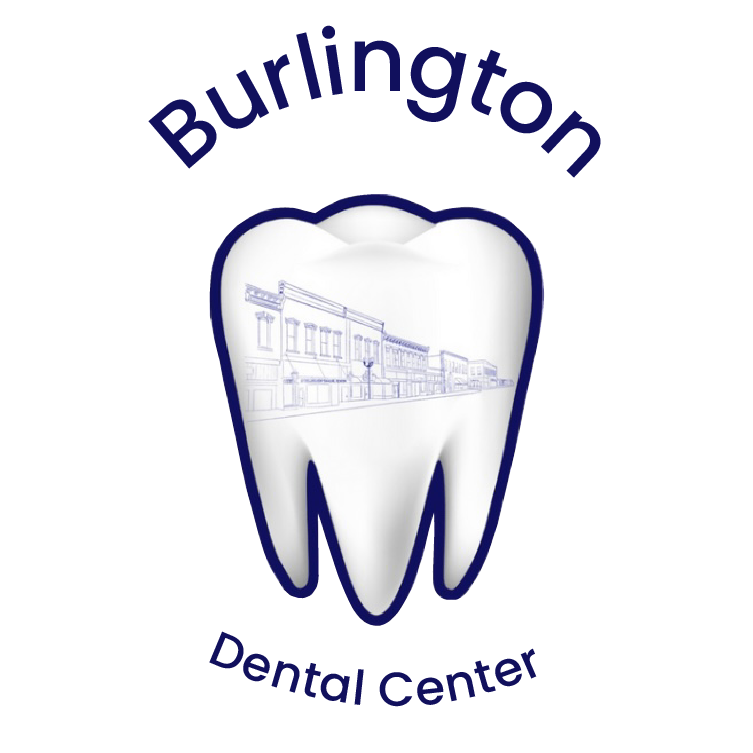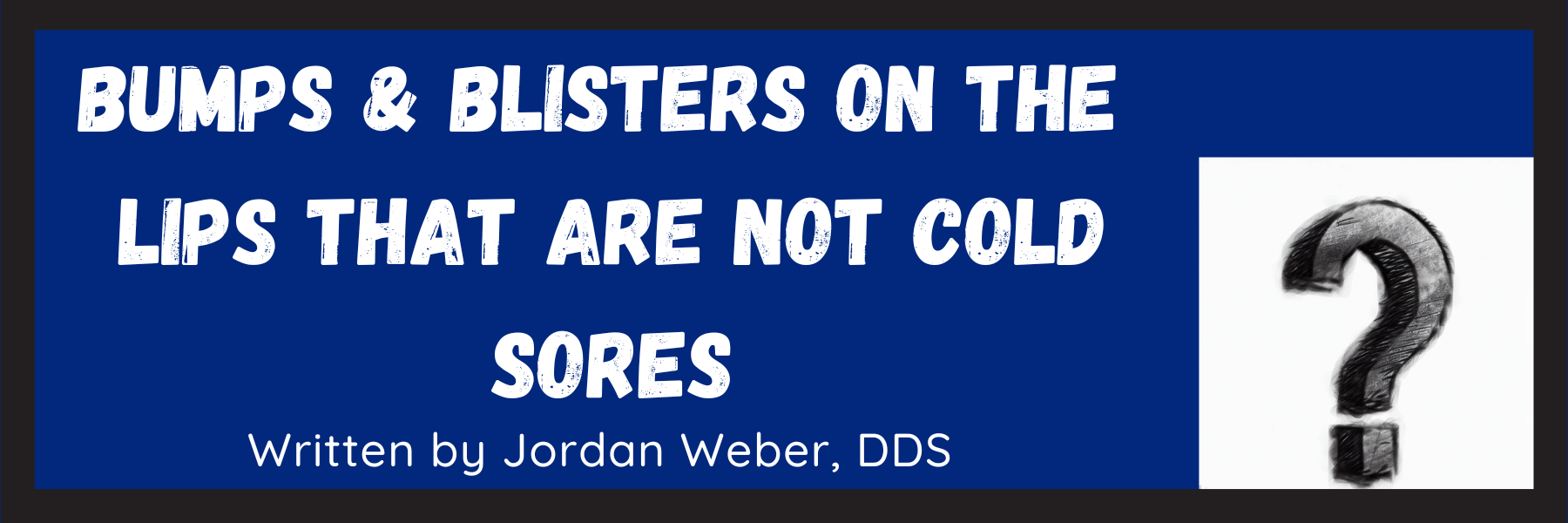When it comes to bumps and blisters on the lips, cold sores often come to mind first. However, a variety of other conditions can cause similar symptoms, each with its own set of causes and treatments.
Understanding what's behind these pesky bumps is key to finding relief and ensuring proper care. While some of these conditions may require a visit to the healthcare provider, many are benign and can be managed effectively at home.
In this article, we’ll explore several common causes of lip bumps and blisters, providing insight into their origins and guidance on when to seek professional help. But please remember that this information is not a substitute for proper, in-person medical attention.
Possible Causes of Bumps on the Lips
1. Fordyce Spots
Description: Small, pale, or yellowish bumps that appear on the lips, often more visible when the skin is stretched. They are typically painless and range in size from 1-2 millimeters.
Causes: Fordyce spots are actually enlarged oil glands and are an extremely common normal anatomical variation. They are not caused by any disease or illness and are present from birth, although they may become more noticeable during puberty due to hormonal changes.
Management: Generally, Fordyce spots do not require any treatment as they are completely harmless. However, if they cause concern for cosmetic reasons, there are treatments available such as laser therapy or topical creams. It’s important to consult with a healthcare provider before pursuing any treatment.
2. Lip Pimples
Description: Acne-like bumps that can appear on or around the lips. They may be red, swollen, and painful, similar to facial acne.
Causes: These bumps are caused by blocked pores or follicles, which can occur due to excess oil production, accumulation of dead skin cells or dirt, or bacteria in the area. Hormonal changes can also play a role, especially during adolescence and menstruation.
Management: Keeping the area clean and avoiding squeezing the pimples are important steps to prevent infection and scarring. Over-the-counter topical acne treatments containing ingredients like salicylic acid or benzoyl peroxide may be helpful. If lip pimples are a recurring issue, it’s advisable to consult a dermatologist for appropriate treatment.
3. Mucocele (Mucous Cyst)
Description: Mucoceles are fluid-filled sacs that can form inside the lips, usually appearing as soft, round, dome-shaped bumps.
Common Causes: These cysts often develop due to lip biting, trauma, or when salivary glands become blocked. They can be more prevalent in individuals who habitually bite or suck on their lips.
Treatment: While many mucoceles resolve spontaneously, some might require medical intervention, especially if they are recurrent or persistent. A healthcare professional can drain the cyst or perform a minor procedure to remove it if necessary.
4. Contact Dermatitis
Description: This is a type of skin inflammation that can occur when the lips come into contact with irritating substances or allergens, leading to redness, swelling, and sometimes blistering or peeling.
Triggers: Common culprits include certain ingredients in lip balms, lipsticks, or other lip products, as well as certain foods, environmental factors, and jewelry or fragrances.
Management: The best course of action is to identify and avoid the irritant or allergen causing the reaction. Applying a soothing lip balm or ointment can help to calm the irritation. In more severe cases, a healthcare professional may prescribe topical steroids to reduce inflammation.
5. Dermatitis (Including Lip Licker’s Dermatitis and Lip Eczema)
Description: These conditions involve chronic irritation, redness, and sometimes bumps on the lips. It can be especially prominent in the corners of the mouth.
Causes: Dermatitis on the lips can be triggered by frequent lip licking, exposure to harsh environmental conditions, or a genetic predisposition to skin issues. Lip licking dermatitis is particularly common in children and can lead to a cycle of irritation and licking.
Management: To manage this condition, it’s important to keep the lips moisturized with a soothing lip balm and to break the habit of frequent lip licking. In more severe or persistent cases, a healthcare professional may prescribe topical steroids to reduce inflammation and promote healing.
6. Allergic Reaction
Description: Allergic reactions on the lips can manifest as swelling, redness, bumps, or even blisters, occurring shortly after exposure to an allergen.
Triggers: Common triggers include certain foods, medications, or ingredients in lip products. It’s crucial to note any patterns in outbreaks to help identify potential allergens.
Management: The primary strategy for managing an allergic reaction on the lips is to identify and avoid the allergen responsible for the reaction. Over-the-counter antihistamines can help manage symptoms, but in cases of severe reactions, medical attention should be sought immediately.
7. Oral Thrush
Description: While this occurs more on the tongue than the lips, oral thrush is a yeast infection caused by the Candida fungus, leading to the development of white bumps or patches inside the mouth and on the lips. It can create a creamy, cottage cheese-like coating and might be accompanied by a burning sensation or discomfort.
Common Causes: The infection typically occurs when there is an overgrowth of the Candida fungus, which can happen when the immune system is weakened, after the use of antibiotics that disturb the natural balance of bacteria in the mouth, or in individuals with certain health conditions such as diabetes.
Treatment: Treatment for oral thrush usually involves antifungal medications, which can be in the form of lozenges, tablets, or liquid mouth rinses. Maintaining good oral hygiene and controlling underlying conditions can also help prevent recurrences.
8. Herpes Simplex (“Cold Sores”)***
(While this article is intended to focus on bumps on the lips that aren’t cold sores, there is some confusion that should be clarified. Because “cold sores” are the common term for the lesions of herpes simplex virus, it is important that the topic still gets discussed briefly).
Description: Herpes simplex virus causes cold sores, resulting in painful, fluid-filled blisters typically located on or around the lips. These sores can crust over and take several days to heal.
Causes: The virus is highly contagious and can be spread through direct contact. Once infected, the virus remains dormant in the body and can reactivate, leading to outbreaks triggered by factors like stress, illness, or sun exposure.
Management: While there is no cure for herpes simplex, antiviral medications can help to manage outbreaks, reduce their frequency, and alleviate discomfort. Applying a lip balm with sun protection can also help prevent outbreaks triggered by sun exposure.
9. Oral Cancer
Description: Oral cancer can manifest as persistent bumps, sores, or irregular patches on the lips that do not heal over time. The appearance may vary, and there might be areas of red or white discoloration or changes in texture.
Risk Factors: The risk of developing oral cancer increases with tobacco use, excessive alcohol consumption, prolonged sun exposure without protection, and infection with certain strains of human papillomavirus (HPV).
Importance of Early Detection: It is crucial to seek medical attention for any lip or oral lesions that do not heal within two weeks. Regular dental check-ups can also play a key role in early detection. While it's important not to jump to conclusions or panic, timely evaluation by a healthcare professional is essential for proper diagnosis and treatment.
Final Thoughts
In this article, we've explored a variety of conditions that can cause bumps and blisters on the lips, ranging from benign and self-limiting to more serious conditions that require prompt medical attention.
It's important to pay attention to your symptoms and seek professional advice for persistent or unusual changes to ensure proper care and peace of mind.
Regular lip care, avoiding known irritants, and maintaining good oral hygiene can help prevent many of these conditions.
Finally, the importance of early detection and treatment cannot be overstated, especially for serious conditions like oral cancer. Don’t self-diagnose; consult a healthcare professional for any concerns about your oral health.
FAQs
What are the bumps on my lips that don't blister?
Bumps on your lips that don't blister could be a variety of things including Fordyce spots, lip pimples, or mucous cysts. Fordyce spots are small, yellowish bumps that are oil glands appearing on the surface. Lip pimples are acne that can occur on or around the lips, and mucous cysts are fluid-filled sacs that can appear inside the lips.
What causes bumps on your lips?
Bumps on the lips can be caused by various factors such as blocked pores or follicles, excess oil production, hormonal changes, allergic reactions, dermatitis, fungal infections, viral infections like herpes simplex, and in rare cases, oral cancer. The specific cause depends on the type of bump and associated symptoms.
How do I get rid of little bumps on my lips?
The approach to getting rid of bumps on your lips depends on the cause. For acne, keeping the area clean and using topical acne treatments may help. For allergic reactions, avoiding the allergen and using antihistamines can provide relief. For dermatitis, applying moisturizing lip balm and avoiding irritants can be beneficial. Always consult a healthcare professional for persistent or severe symptoms.
Can you get a bump on your lip without it being a cold sore?
Yes, there are several types of bumps that can appear on the lips that are not cold sores. These can include Fordyce spots, lip pimples, mucoceles, and bumps caused by allergic reactions or dermatitis.
Why do I have weird tiny bumps on my lips?
Weird tiny bumps on the lips could be Fordyce spots, which are enlarged oil glands and completely normal. They could also be caused by minor irritation, blocked pores, or allergic reactions. If you're unsure about the cause, it's best to consult a healthcare professional.
What are the little painless bumps on my inner lip?
Little painless bumps on the inner lip could be Fordyce spots, which are completely harmless and normal, or mucous cysts, which are fluid-filled sacs resulting from lip biting, trauma, or blocked salivary glands. Mucous cysts often resolve on their own, but persistent or large cysts may require medical attention.
* Though the author of this post is a licensed dentist in the state of Kansas, this information is provided for informational and educational purposes only. Please use your best judgment and contact emergency medical services in the event of an emergency.



